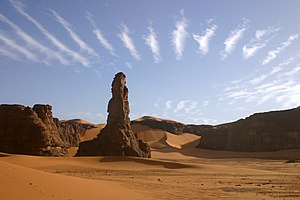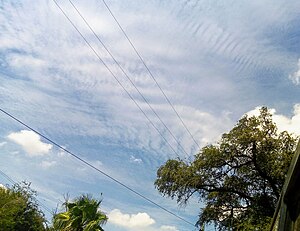Wave cloud
The atmospheric internal waves that form wave clouds are created as stable air flows over a raised land feature such as a mountain range, and can form either directly above or in the lee of the feature.
As an air mass travels through the wave, it undergoes repeated uplift and descent.
As a result, they are being analyzed to increase our understanding of how these upper-level ice clouds influence the Earth's radiation budget.
[1] In an ideal model, a wave cloud consists of supercooled liquid water at the lower part, a mixed phase of frozen and liquid water near the ridge, and ice beginning slightly below the ridge and extending downstream.
Wave cloud structure ranges from smooth and simple, to jumbled phases occurring randomly.




